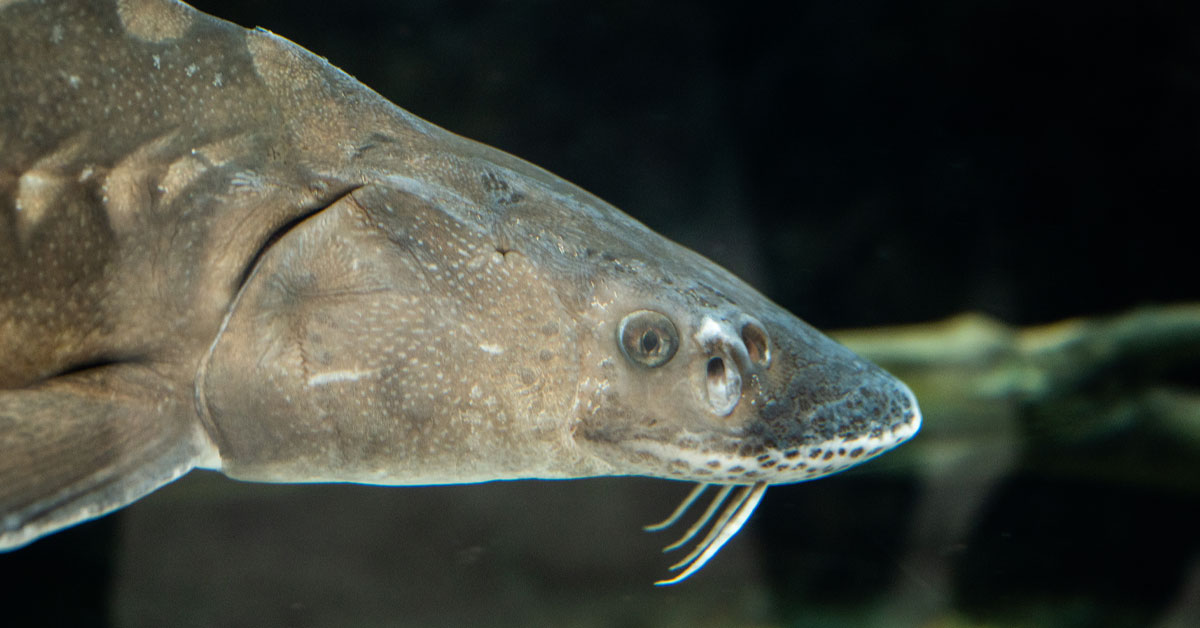New AI Technology Aims to Revolutionize Fish Farming
Published Date
Article Content
To better understand how artificial intelligence (AI) can advance U.S. aquaculture development — the cultivation of aquatic animals and plants for food, fuel and more — a team of scientists from UC San Diego, UC Davis and the University of Washington will use a mobile camera mounted system, similar to a barcode scanner at a grocery store, to capture images of white sturgeon to determine their anatomical traits. This approach eliminates the need for extensive manual handling and potential sedation of the fish, while also improving efficiency in the production of sturgeon for protein and caviar.
The scientists — from UC San Diego’s Halıcıoğlu Data Science Institute (HDSI), part of the School of Computing, Information and Data Sciences, and the Jacobs School of Engineering, as well as UC Davis’ Department of Animal Sciences and Aquaculture Cooperative Extension, and the University of Washington (UW) Friday Harbor Laboratories — have been awarded a grant to do this work from the U.S. Department of Agriculture (USDA) National Institute of Food and Agriculture (NIFA) Western Regional Aquaculture Center for aquaculture research focused on sturgeon farming. The scientists will use Expanse at UC San Diego’s San Diego Supercomputer Center (SDSC) to facilitate their study.
“Thanks to funding from the USDA NIFA and U.S. National Science Foundation, we will be able to create advanced machine learning models using Expanse at SDSC to analyze these images to distinguish between male and female fish, with increasing accuracy over time,” explained UC President’s Postdoctoral Fellow Edwin Solares, a lecturer for HDSI and the Computer Science and Engineering Department at the Jacobs School. “Traditional sex determination methods – such as ultrasound – require extensive handling, trained staff and significant labor, whereas our proposed system eliminates the stress to fish, increases throughput while also reducing costs.”

Solares worked with UC Cooperative Extension Specialist Jackson Gross from the Department of Animal Science at UC Davis on a proof-of-concept study which focused on AI model development with California sturgeon producers to collect the preliminary images to train models to identify subtle anatomical differences between male and female sturgeon, which are indistinguishable to the human eye, even that of an expert.
"Edwin built and trained models which proved exciting and had promising results," Gross explained. "Our funding provides continued support for subsequent phases and is contingent on our success in improving the model’s accuracy and transferring the technology to the aquaculture community."
Gross and Solares have formed collaborations with sturgeon growers in California and Idaho who will serve as industry partners to ensure that the research and goals align with producer needs. “While our initial AI models initially achieved 76 percent accuracy, we have now reached a much higher milestone with 90 percent accuracy,” Gross said. “We want to significantly improve this figure by expanding our dataset from a few hundred images to tens of thousands of noisier images over the duration of the new grant – with the goal of detecting sex earlier in than three years of age.”
Gross said that the research team is confident in enhancing detection accuracy to rival, if not surpass, traditional methods.
Solares explained that previous computer vision research demonstrated how larger and more robust datasets lead to better model performance and allocations from the NSF ACCESS program on the Expanse system at SDSC will allow the team to leverage machine learning advancements.
“One of the key goals of our project is to develop a user-friendly, farm-level solution for sturgeon producers and because AI technology has advanced significantly, we believe it is fully capable of sexing small younger fish in a farm environment," said Adam Summers, professor at the UW Friday Harbor Laboratories. "Our software will run on a mobile platform, receive over-the-air updates, requiring minimal training for farm staff, ensuring seamless integration into daily operations."
In addition to developing a practical solution, the research team will conduct a comprehensive review of existing AI applications in aquaculture, particularly in sex determination. By showcasing their innovative approach through high-resolution imagery and detailed algorithmic analysis, they aim to provide a transparent and scientifically rigorous demonstration of their methodology.
“As our study progresses, our findings will not only benefit sturgeon producers but also serve as a model for AI applications in aquaculture more broadly,” Summers said. “This innovation could set a new standard for non-invasive, efficient fish management, paving the way for further technological advancements in the field, which will also help current conservation efforts for endangered species of sturgeon and possibly other fish species.”
Funding for the upcoming research will be provided by USDA NIFA Western Regional Aquaculture Center while computational resources are funded by U.S. NSF ACCESS (grant no. MCB180035).
Learn more about research and education at UC San Diego in: Artificial Intelligence
Share This:
You May Also Like
UC San Diego is Strengthening U.S. Semiconductor Innovation and Workforce Development
Technology & EngineeringStay in the Know
Keep up with all the latest from UC San Diego. Subscribe to the newsletter today.






